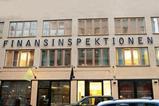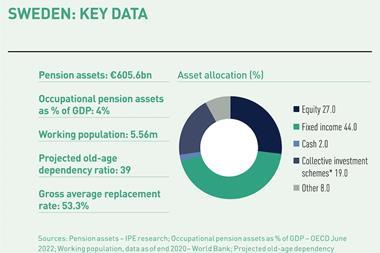AP7, the Swedish national pension fund providing the default option in the first-pillar premium pension system, beat the commercially-run options with its return in the first six months of this year – albeit with a serious loss.
An overweight to emerging markets contributed to AP7’s equity fund underperformance, but its chief investment officer told IPE that AP7 would nevertheless be maintaining that stance.
The Stockholm-based state fund last week published interim reports for its equity and bond funds – the two building blocks used in its lifecycle premium pension product Såfa – although the news was released in a low-key manner and appeared to go unreported in the media.
A spokesman for AP7 told IPE that Såfa had ended the half-year period with a return of -11.6%, compared with -18.5% for the average of the private funds in the premium pension system.
At the end of June, AP7’s assets under management had diminished to SEK855bn (€79.5bn) in total from SEK966.9bn at the end of 2021, including SEK773.2bn in the equity fund and SEK82.3bn in the fixed-income fund, he said.
The latter fund suffered a 5.6% investment loss in the first six months of 2022, in line with its benchmark index, the spokesman said, while the much larger equity fund had a return of -12.2%, which was 2.8% lower than the benchmark index.
In the report on the equity fund, AP7 said: “The global portfolio was the main contributor to the fund’s return, while several of the risk classes in the diversification portfolio contributed positively to the fund’s relative return.”
The biggest positive contribution relative to the benchmark came from the fund’s private equity investments, the investment in risk premiums and the fund’s absolute-yield mandate, AP7 said.
“The overweight to emerging markets also contributed to the fund’s development compared to the benchmark index,” the fund said.
Asked for her view on emerging markets for the rest of this year, given the overweight to those regions had been partly to blame for equity fund underperformance, CIO Ingrid Albinsson told IPE: “Although we saw the portfolio’s overweight in emerging markets adding an underperformance in the first quarter, when the conflict in Ukraine escalated, it reduced the fund’s underperformance against the benchmark until the end of June.”
The performance of emerging market equities had continued to hold up versus developed markets, she said, adding that AP7 did not expect that to change, given valuations in markets.
“In general, the overweight in emerging markets is strategic, based on a long-term view of capital market expectations and growth perspectives in different regions,” Albinsson said.
IPE also asked Albinsson whether this year’s developments on financial markets had vindicated any particular aspects of AP7’s investment strategy.
“The strategy in the fund is dominated by diversification which has played out well, even if we have a fund of higher risk,” she said.
“The high-risk approach is because of the character of a long-term pension saving plan,” said the CIO.
Sweden’s parliament, the Riksdag, is due to vote on changes to AP7’s mandate this autumn. Asked whether the new freedom to invest in other asset classes would protect the fund in volatile or falling markets in future, Albinsson said: “The changes, if parliament approves, will increase AP7´s opportunities to expand diversification into alternative assets.
“This will enhance the return risk perspective of the portfolio and make the portfolio more efficient and robust,” she said.
It would also expand the opportunities to integrate sustainability into the fund’s investments, she added.
“Both the real estate sector and the building of infrastructure needs capital from investors like AP7 to finance the transformation of the world to a more sustainable future, just as investments in these assets mean that our unit-holders will be able to participate in the wealth creation made in this transformation,” said Albinsson.
AP7 also said in its equity fund report that during the six months, the diversifying holdings in risk premiums and private equity had increased further – and that the fund’s risk level and degree of exposure had remained largely unchanged during the first half of the year.
Read the digital edition of IPE’s latest magazine

















No comments yet